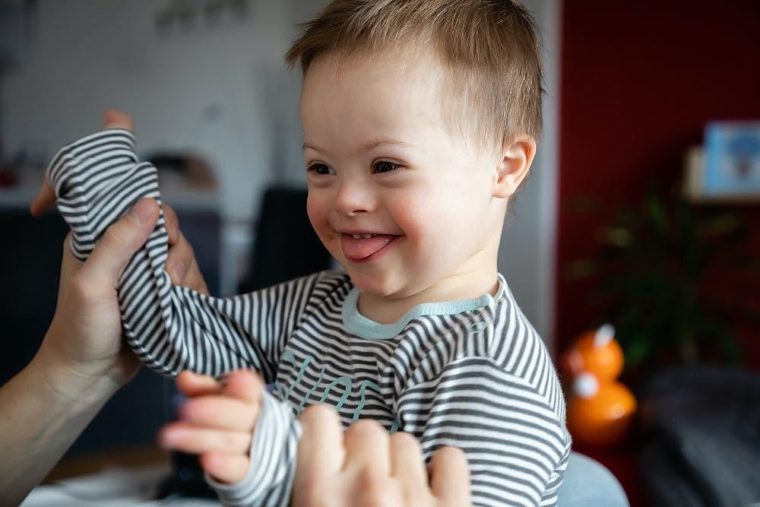Down syndrome is a syndrome that causes changes in the child’s body and brain. These kids need specific monitoring to support their development.
According to the Centers for Disease Control and Prevention (CDC), approximately 6,000 babies are born with Down Syndrome each year in the United States. This condition is caused by an “extra” copy of genes on chromosome 21. This extra copy is responsible for the changes in the mental and physical development of children, which can be moderate or more severe.
Being a genetic condition, this syndrome accompanies the person throughout life and can cause some health and learning problems. Therefore, it is essential to better understand the physical features of Down syndrome and the specific care it requires. Continue reading to learn more about it.
What Is Down Syndrome And What Causes It?
In general, babies are born with 46 chromosomes. Each pair is like a “bundle of genes” that determines how the body and brain are formed and, to some extent, how they will function throughout life. As we said, Down syndrome is the result of a copy of chromosome 21. That’s why it is also known as trisomy 21.
This occurs during your baby’s conception. Therefore, the condition is not related to any specific causes: it can occur in any pregnancy, although it is more prevalent among mothers over 40 years of age.
What Are The Physical Features Of Children With Down Syndrome?
Every child is unique, and this is even more true when born with Down syndrome. However, trisomy 21 leads to some common physical features, such as:
- Flatter face, especially the tip of the nose
- Almond-shaped, slightly upturned eyes
- Smaller than average ears, hands, and feet
- Very straight and fine hair
- Short stature
- Single line across the palm of the hand.
Also, people with Down Syndrome tend to have weaker muscle tone (hypotonia) and are more vulnerable to developing some heart, respiratory, visual, and hearing diseases.
Finally, mental development can be slower than that of other children, especially when there is not adequate stimulation from early childhood.
Is There Specific Care For Children With Trisomy 21?
It is important to emphasize that trisomy 21 is not a disease. Therefore, there is no “treatment for Down syndrome.” However, some specific care is very welcome so that the child can achieve good physical and cognitive development.
Each case must be evaluated individually so that the child receives the ideal support and stimuli to achieve a good degree of autonomy. In addition, it is essential to carry out a specialized follow-up to prevent or identify and treat diseases associated with Down syndrome early on.
As you have seen, trisomy 21 causes changes in child development. Thus, although a child with Down Syndrome has more similarities than differences compared to children without it, it is important to know their characteristics and particularities to take care of them in the best way.
Do you have a child or family member with Down Syndrome? Leave a comment below!








